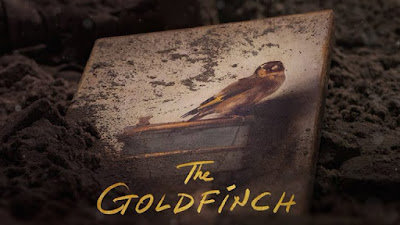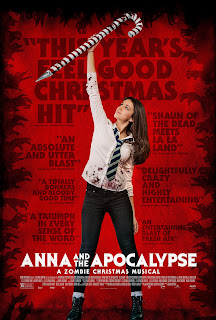The Goldfinch (Dir John Crowley, 2h 29m)
In 1958, the American businessman Clifton Hillegass, together with his wife, published the first sixteen of what would eventually become known as the Cliff Notes guides, on sixteen Shakespearean plays, and by 1964, over one million copies had been sold-today, the Cliff Notes series, together with countless imitators and copyists boil down novels, plays, and poems for generations of students. It would seem, with The Goldfinch, adapting Donna Tartt's Pulitzer Prize-winning 2013 novel of the same name, Amazon Studios have joined this noble effort. This, I feel, is the only explanation for what is, otherwise, a nigh-incomprehensible, cramped, confusing and downright badly adapted film, in which no amount of poised character acting, nor the sterling work of the venerable Roger Deakins in making a film as painterly as the 16th century work around which the film revolves, can save.
After the death of his mother in a bombing in New York's The Met, Theodore Decker (played by Oakes Fegley as a child, and by Ansel Elgort as an adult) finds himself drifting between a surrogate family in New York, his alcoholic father in Las Vegas, and kindly antiques dealer Hobie, struggling for identity between the family that treats him like a son, his abusive alcoholic father, and the friendship with an artforger and his young ward, also affected by the bombing. Certainly, peppered as it is through the rest of the film, these scenes are, without a doubt, the best part of the film, as, bit by bit, Theo goes through a slow, lingering loss of innocence-though there are glints occasionally of the darker side that he has had all along.
These are, to be entirely blunt, the most coherent parts of the film, as Crowley simply adapts the novel-were there less of a non-linear structure dropped onto this film in an attempt to be cinematically clever, to show off a series of tricks Crowley simply does not have the ability to pull off, then The Goldfinch would, at the least be a coherent adaption. From Fegley outwards, the cast is excellent, from fellow outsider, Boris (Finn Wolfhard), whose corrupting influence upon the other boy, as he introduces drink and drugs to him, but also perhaps the most important lessons of his life, to Nicole Kidman as the matriarch of the Barbour family who take Theo in, to what may be the best performance of Owen Wilson's career comeback, as the alcoholic dysfunctional father that takes Theo to live in Las Vegas
Indeed, it is this bond between Boris and Theo that drives much of the younger section of the film-for all his misanthropic-Boris is dressed in black for almost his entire appearance, child and adult-dislike of the sun, of his constant moving, he truly cares about Theo, and through their growing friendship, their shared time together, drinking and taking drugs in a barren, sandblasted Las Vegas full of foreclosed homes and unhappy, alcoholic adults, Crowley comes close to suggesting the elements of fate that run through Tartt's novel, in that both boys eventually become a reflection of their father's flaws, and undoubtedly, when Boris reappears late in the second half of the narrative, the film does manage to jump up a gear, and begins to feel coherent again.
Among these, however, there is one performance which stands above them all, being Pippa, another survivor of the bombing, and Aimee Laurence, in the few scenes she appears in, utterly steals the scene-like Theo, she has lost her parents, and via the bombing, her ability to play music, and it is this loss of innocence that the film captures best. Even as an adult, Pippa's connection to the events that she shares with Theo largely define her, as she is forced to admit that, for all their shared chemistry, it can never be precisely because they share so much.
This shared experience, the bombing of The Met, is a sequence that the film returns to time and again, and where Deakins' cinematography is as its strongest, as the film picks across the strewn rubble, and through the dust and chaos-one cannot help but connect this stark visual with that greatest loss of innocence of the 21st Century, in the destruction of the Twin Towers.It is here that the other haunting image of the film, that of the painting itself, begins to emerge-this trapped bird, forever tied to its perch is, unmistakably, a representation of Theo's grief, of his inability to let go of the painting. His theft of it is something that the film drifts around for a long time, wrapped up with his meeting with the art forger's former partner, and, in places it feels like a substitute for the mother he lost, with one shot showing how vulnerable he is, painting hugged to his chest, foetal on the floor,
Indeed, its effectiveness of the painting as emblematic of this grief that its actual appearance in the film is metered out, the actual painting covered, like a wound, only for its reappearance late in the film to reopen it, and the grief, lack of closure and loss of grace it represents spills into the second half of the film, which otherwise feels leaden and chaotic. Around the well-paced sequences of the young Theo, is an altogether messier film, full of demi-acting, bad pacing, as the action spirals out of control around him, as his relationships collapse, and his deceit is laid bare.
With the film's simple descent of its protagonist into crime, forgery and theft, becoming masklike completely lost in a structure that's not so much non-linear, as it is a mobius strip of confusion, as the otherwise excellent young Theo sections are interplayed with sections in which almost every moment falls flat; every major moment from here on out, every revelation, every act that Theo makes in this film as his crumbling descent continues downward, the fate of the painting and the tangled web of Theo's relationships is either botched, badly acted or simply edited or shot badly. This film is so badly edited that trying to follow its narrative thread, through its back and forthing is headache inducing.
Perhaps the worst example of this comes in a major change towards the film's ending, where the relationship between two characters, at least in Tartt's novel, is reforged, and both receive a sense of closure, with one of them using the money from the painting's recovery to appreciate the nature of art in the world around him, to understand "the history of people who have loved beautiful things, and looked out for them, and pulled them from the fire", which absolutely underpins the true (and imagined) history of the painting, and its connection to its protagonist. Theo moves on, grows from his experiences, and shows, in simple terms "this is what it is worth living for", in a work that unflinchingly deals with death, despair and the aftermath of loss.
The film, despite skirting around this uplifting coda, utterly botches this most important of Aesop and returns to what essentially began the entire chain of events, gaining no closure, simply turning back in on itself-its characters will never truly move on-the film cannot help but return to The Goldfinch, the gallery, and the bond forged between Pippa and Theo, and ends on what is less a bleak note, and more a bum one. This inability to adapt, to try and be overly clever with a work that is dense, and end with a surface gleaning of its subject, a Cliff Notes, a heftily abridged adaption comprising of disjointed movement from scene to scene bluntly summarises the cackhandedness of this film. And i is this inability to capture what makes The Goldfinch a great work of post 2000s literature, that leaves a plot that runs like molasses, sticking in all the wrong places, to arrive in front of audiences incomplete and fractured.
It's thus emblematic of the film that something as nuanced, as complex, as alive as Tartt's novel, is reduced to something as flat, as rushed, and as heavily abridged as this film is. For all its beauty, both in the nuanced performances of the child actors, and in the incomparable work of Deakins, it is a reflection of the painting that Theo covets and obsesses over-a reduction of life to flat and static, a movement of paint on canvas, of images on digitised celluloid. It is beautiful, but empty.
Rating: Neutral



Comments
Post a Comment